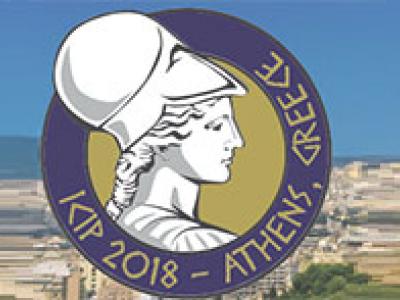
- Read more about DEEPSSH: DEEP SEMANTIC STRUCTURED HASHING FOR EXPLAINABLE PERSON RE-IDENTIFICATION
- Log in to post comments
poster.pdf
- Categories:
 55 Views
55 Views
Spatial pooling over convolutional activations (e.g., max pooling or sum pooling) has been shown to be successful in learning deep representations for image retrieval. However, most pooling techniques assume that every activation is equally important, and as a result they suffer from the presence of uninformative image regions that play a negative role as regards matching or lead to the confusion of particular visual instances. To address this issue, we propose a trainable building block that steers pooling to local information important to the task at hand.
TP.L2.4.pdf
- Categories:
 55 Views
55 Views
- Read more about SEMANTICALLY INVARIANT TEXT-TO-IMAGE GENERATION
- Log in to post comments
- Categories:
 7 Views
7 Views
- Categories:
 15 Views
15 Views
- Read more about AESTHETICS ASSESSMENT OF IMAGES CONTAINING FACES
- Log in to post comments
poster.pdf
- Categories:
 6 Views
6 Views
- Read more about Sub-diffraction Imaging using Fourier Ptychography and Structured Sparsity
- Log in to post comments
We consider the problem of super-resolution for sub-diffraction imaging. We adapt conventional Fourier ptychographic approaches, for the case where the images to be acquired have an underlying structured sparsity. We propose some sub-sampling strategies which can be easily adapted to existing ptychographic setups. We then use a novel technique called CoPRAM with some modifications, to recover sparse (and block sparse) images from sub-sampled ptychographic measurements.
- Categories:
 28 Views
28 Views
- Read more about L0-REGULARIZED HYBRID GRADIENT SPARSITY PRIORS FOR ROBUST SINGLE-IMAGE BLIND DEBLURRING
- Log in to post comments
Single-image blind deblurring is a challenging ill-posed in- verse problem which aims to estimate both blur kernel and latent sharp image from only one observation. This paper fo- cuses on first estimating the blur kernel alone and then restor- ing the latent image since it has been proven to be more feasi- ble to handle the ill-posed nature during blind deblurring. To estimate an accurate blur kernel, L0-norm of both first- and second-order image gradients is proposed to regularize the final estimation result.
- Categories:
 38 Views
38 Views
- Read more about Regularized SVD-based Video Frame Saliency for Unsupervised Activity Video Summarization
- Log in to post comments
Storage, browsing and analysis of human activity videos can be significantly facilitated by automated video summarization. Unsupervised key-frame extraction remains the most widely applicable technique for summarizing activity videos. However, their specific properties make the problem difficult to solve. Typical relevant algorithms fall under the video frame clustering or the dictionary-of-representatives families, with salient dictionary learning having been recently proposed.
- Categories:
 6 Views
6 Views
- Read more about Tracked Instance Search
- Log in to post comments
In this work we propose tracking as a generic addition to the instance search task. From video data perspective, much information that can be used is not taken into account in the traditional instance search approach. This work aims to provide insights on exploiting such existing information by means of tracking and the proper combination of the results, independently of the instance search system. We also present a study on the improvement of the system when using multiple independent instances (up to 4) of the same person
- Categories:
 4 Views
4 Views